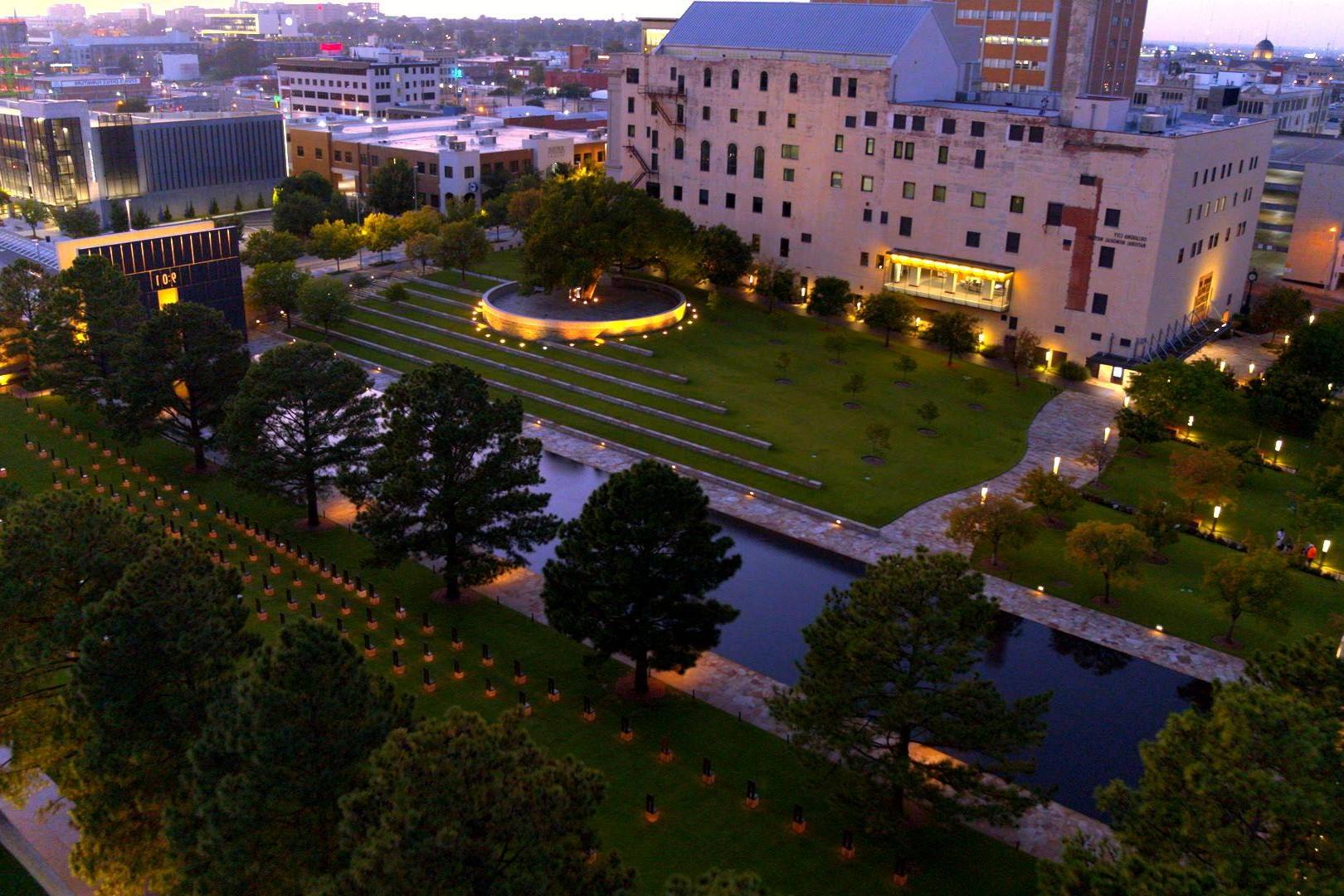Reflect And Remember At Oklahoma City National Memorial

Have you ever wondered about the significance of the Oklahoma City National Memorial? This powerful site stands as a tribute to the victims, survivors, and rescuers of the tragic bombing on April 19, 1995. Visiting this memorial offers a chance to reflect on the resilience and strength of a community that came together in the face of adversity. The serene Reflecting Pool, the Field of Empty Chairs, and the Survivor Tree each tell a part of the story. Whether you're a history buff or just looking for a meaningful experience, this memorial provides a profound reminder of hope and unity.
Reflect and Remember at Oklahoma City National Memorial
The Oklahoma City National Memorial stands as a poignant reminder of the tragic events of April 19, 1995. This site honors the victims, survivors, and rescuers of the Oklahoma City bombing. Here are some key spots within the memorial that you shouldn't miss.
The Gates of Time
The Gates of Time mark the moments before and after the bombing. They frame the memorial and symbolize the impact of the event on the city and its people.
- East Gate: Represents 9:01 AM, the last moment of peace before the bombing.
- West Gate: Marks 9:03 AM, the moment when recovery began.
The Reflecting Pool
A serene body of water, the Reflecting Pool offers a place for contemplation and remembrance. It stretches between the Gates of Time, symbolizing the healing process.
- Calm Waters: The stillness of the pool reflects the desire for peace and tranquility.
- Mirrored Images: Visitors see their reflections, connecting the past with the present.
The Field of Empty Chairs
This haunting display features 168 empty chairs, each representing a life lost in the bombing. The chairs are arranged in nine rows, symbolizing the nine floors of the Alfred P. Murrah Federal Building.
- Bronze and Glass Chairs: Each chair is crafted from bronze and glass, with smaller chairs representing the children who perished.
- Names Engraved: Every chair bears the name of a victim, ensuring they are never forgotten.
The Survivor Tree
A symbol of resilience and hope, the Survivor Tree is an American elm that withstood the blast. It stands as a testament to the strength of the human spirit.
- Blossoming Elm: Despite the devastation, this tree continues to thrive and bloom.
- Symbol of Hope: The tree represents the ability to overcome adversity and rebuild.
The Memorial Museum
The Memorial Museum offers a deeper understanding of the events surrounding the bombing. It provides a comprehensive look at the impact on the community and the nation.
- Interactive Exhibits: Visitors can engage with exhibits that tell the story of the bombing and its aftermath.
- Personal Stories: The museum features personal accounts from survivors, rescuers, and family members of the victims.
The Rescuers' Orchard
This area honors the brave individuals who risked their lives to save others. The orchard is filled with trees, each representing a different rescue team.
- Fruit Trees: Various fruit trees symbolize the diversity and unity of the rescue efforts.
- Plaques and Markers: Informational plaques provide insight into the heroic actions taken during the rescue operations.
The Children's Area
A special section dedicated to the youngest victims, the Children's Area offers a place for reflection and healing. It includes a wall where children can leave messages of hope.
- Chalkboard Wall: Kids can write messages and draw pictures, expressing their feelings and thoughts.
- Colorful Tiles: The area is adorned with tiles painted by children from across the country, showing solidarity and support.
The Survivor Wall
The Survivor Wall lists the names of over 600 individuals who survived the bombing. It serves as a reminder of the resilience and strength of those who lived through the tragedy.
- Granite Panels: The names are etched into granite panels, ensuring they are permanently remembered.
- Stories of Survival: The wall highlights the incredible stories of those who overcame the odds.
The Fence
Initially erected to protect the site, the Fence has become a place where people leave tokens of remembrance. It stands as a testament to the ongoing support and love from around the world.
- Mementos and Tributes: Visitors leave flowers, notes, and other items to honor the victims and show their support.
- Global Connection: The Fence symbolizes the unity and compassion of people from all corners of the globe.
Honoring the Past, Embracing the Future
The Oklahoma City National Memorial stands as a powerful tribute to those affected by the tragic bombing. Visiting this site offers a chance to reflect on the resilience of the human spirit. The Survivor Tree, Field of Empty Chairs, and Reflecting Pool each tell a part of the story, reminding us of the importance of unity and healing.
Exploring the museum provides deeper insights into the events and aftermath, making it a meaningful experience for all ages. Whether you're a local or a visitor, this memorial is a place for contemplation and learning. It’s not just about remembering the past but also about looking forward with hope.
Plan your visit to the Oklahoma City National Memorial to honor the past and embrace a future built on understanding and compassion.

